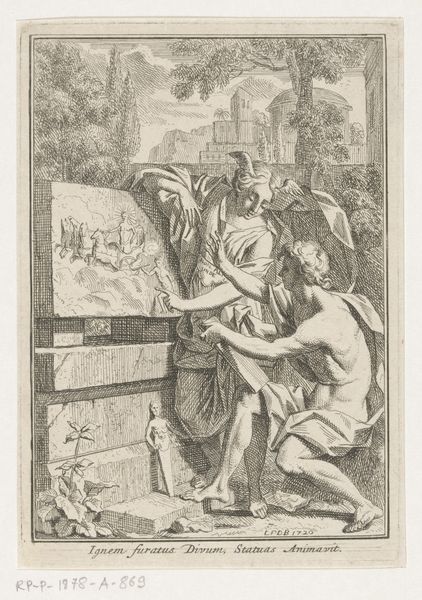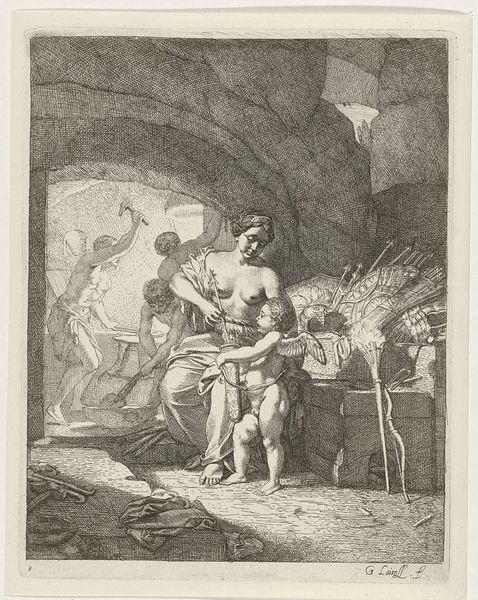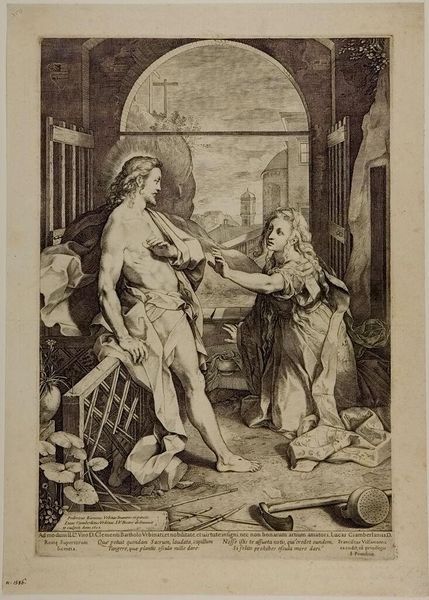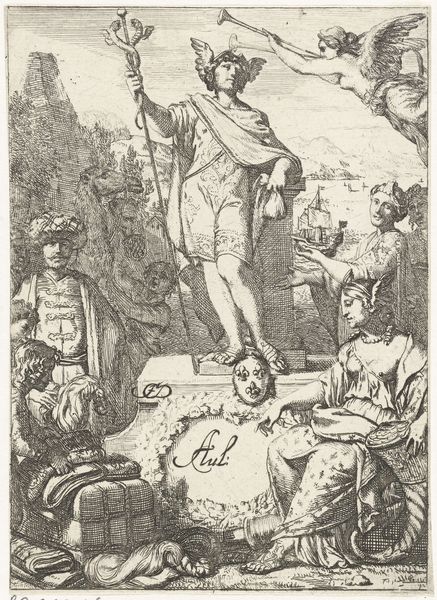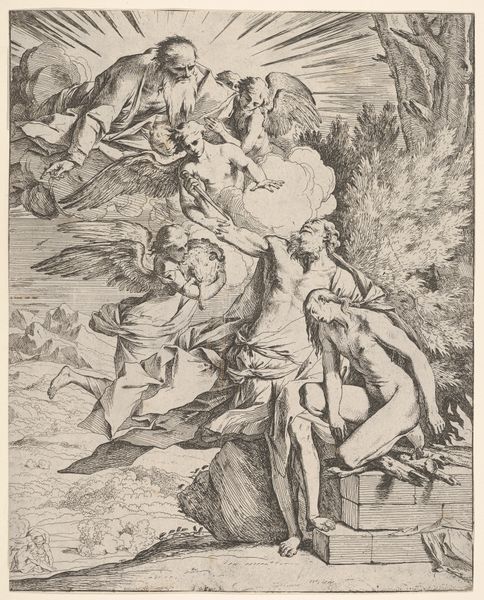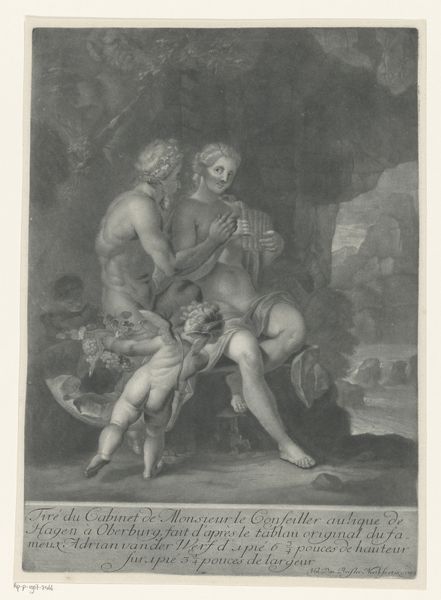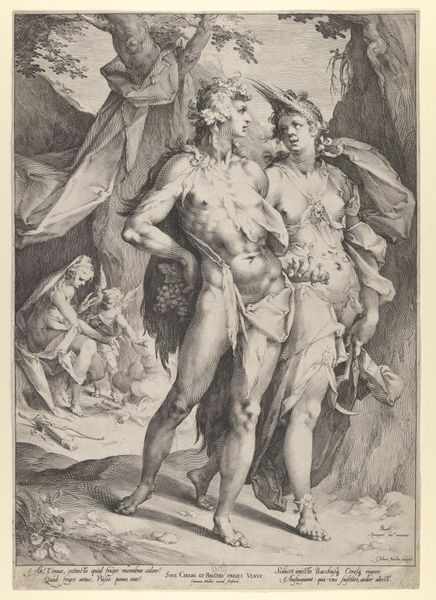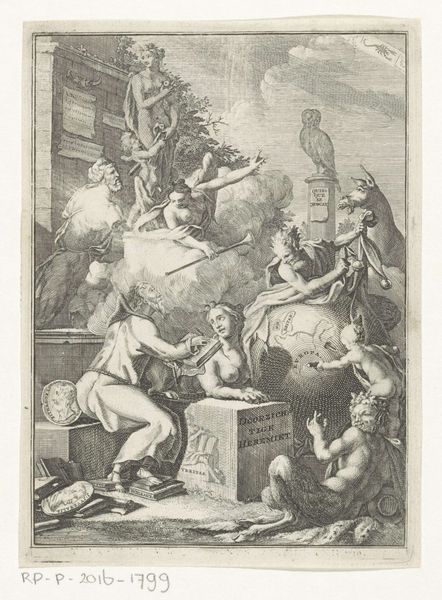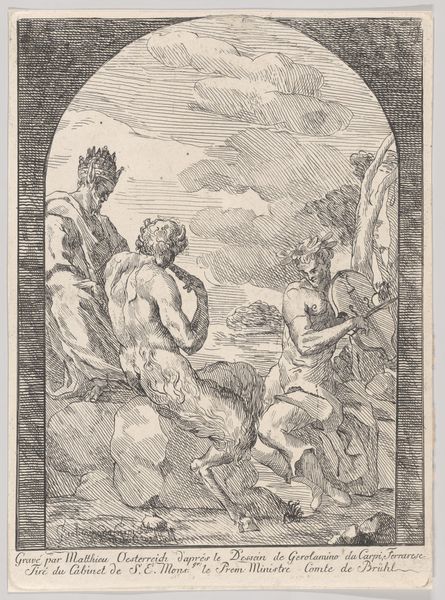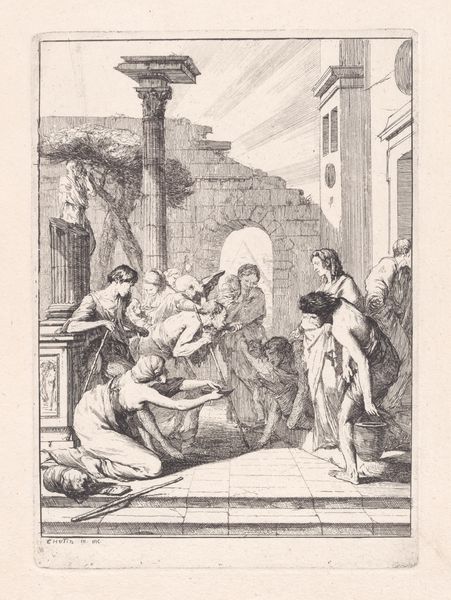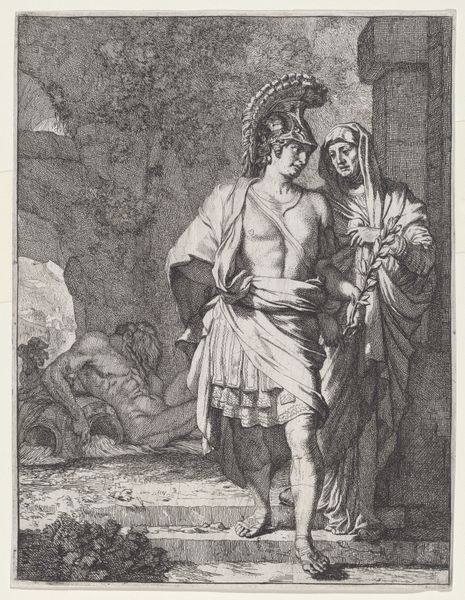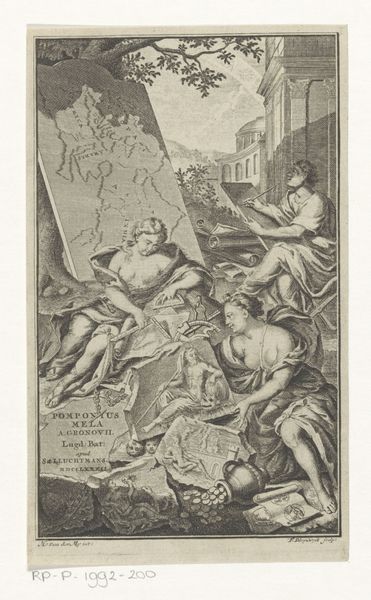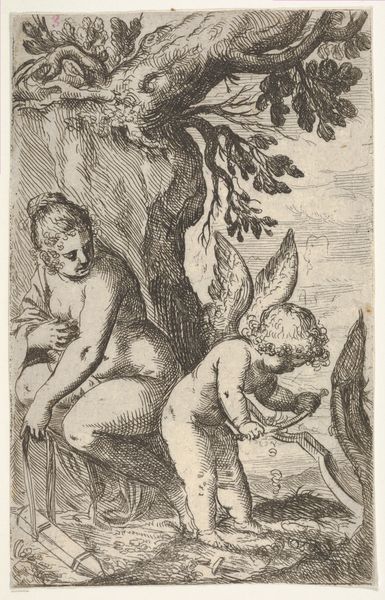
drawing, print, ink, engraving
#
drawing
#
allegory
#
pen drawing
# print
#
ink
#
history-painting
#
nude
#
engraving
Dimensions: Plate: 11 7/8 × 8 7/16 in. (30.2 × 21.5 cm) Sheet: 15 3/4 × 10 5/8 in. (40 × 27 cm)
Copyright: Public Domain
Editor: Here we have Giovanni David's 1775 engraving, "Icarus and Daedalus," currently residing at the Met. There's such a sharp contrast between the carefully rendered figures and the rough background architecture. It almost creates a stage for this iconic moment. How do you interpret this work? Curator: This piece speaks volumes about the late 18th-century obsession with classical narratives, particularly their use in conveying moral lessons. Considering the socio-political climate, with Enlightenment ideals clashing against established powers, what statement might David be making about ambition and societal constraints? Notice how the workshop almost appears to imprison Daedalus, an intellectual and an artisan, while Icarus yearns for open skies. Does the stark imagery present a critique of institutional authority stifling individual aspirations? Editor: That's a great point about the setting feeling like a prison. I was so focused on the figures; I didn't really consider what the architectural context implied about freedom or the lack thereof. Curator: The decision to depict the scene within a confined workshop, filled with the tools of creation and escape, invites us to examine the artist's own position within the art world. Art production and reception at the time was regulated by academies, shaped by powerful patrons. Think of Daedalus’ wings not just as physical objects, but metaphors for artistic creation—attempts at innovation that society both enables and potentially punishes, no? Editor: That makes total sense. It's a complex relationship he's portraying. He's pointing out the support of the institutions but warning against becoming a slave to them? Curator: Precisely! Perhaps David implies true artistic achievement requires breaking free from those structures to some extent. So how does our modern understanding and re-interpretation alter his own perspective and presentation? Editor: Wow, I definitely see this piece differently now. Thinking about it as a commentary on artistic freedom, versus just the myth itself, adds a whole new layer of meaning. Curator: Exactly! Historical context reshapes our viewing of artistic creation, and perhaps David might also caution the experts and academics in controlling the narratives as well.
Comments
No comments
Be the first to comment and join the conversation on the ultimate creative platform.
